Not everyone knows about this Le Creuset gem, but I use it more than my casserole dish - bakers, get bread-y
It's surprisingly versatile

If you're a keen baker and you're ready to splurge, this is a great investment. It'll deliver great structure, a perfect crust, and a delicious bounce to your dough. I've used it for other bakes (cookies, pizzas, and tarts). The only catch is that it'll dominate your oven and only deliver a little more finesse than a casserole dish or Dutch oven.
-
+
Surprisingly versatile if you bake often
-
+
Transfers heat really evenly and keeps steam in
-
+
Perfect for a range of different bread doughs
-
-
Pattern in base can be difficult to clean
-
-
Will need a lot of space in the oven
Why you can trust Woman & Home

The Le Creuset Cast Iron Bread Oven is expensive. However, if you're a budding baker who wants to add the final touch to their loaves, it's worth the splurge. I used to rely on my cast iron casserole dishes to do the job, but this is a whole new world.
I was in the balance for years over the Le Creuset Cast Iron Bread Oven. My answer to the whole 'is Le Creuset worth it?' question has always been a yes, because I am a keen baker and firm Le Creuset fan. However, I've never struggled to cook good bread in a casserole dish (or Dutch oven, to some). Or, at least I thought I'd never struggled.
With the help of Le Cresuet's Cast Iron Bread Oven, I've made some of my best loaves yet. From sourdough to brioche, the weighty dome keeps steam in, so your bread will have a delicate crust, wonderful rise, and great spring. And, if you want to bake tarts, pizzas, and cookies, it'll double up as a skillet too.
Specifications
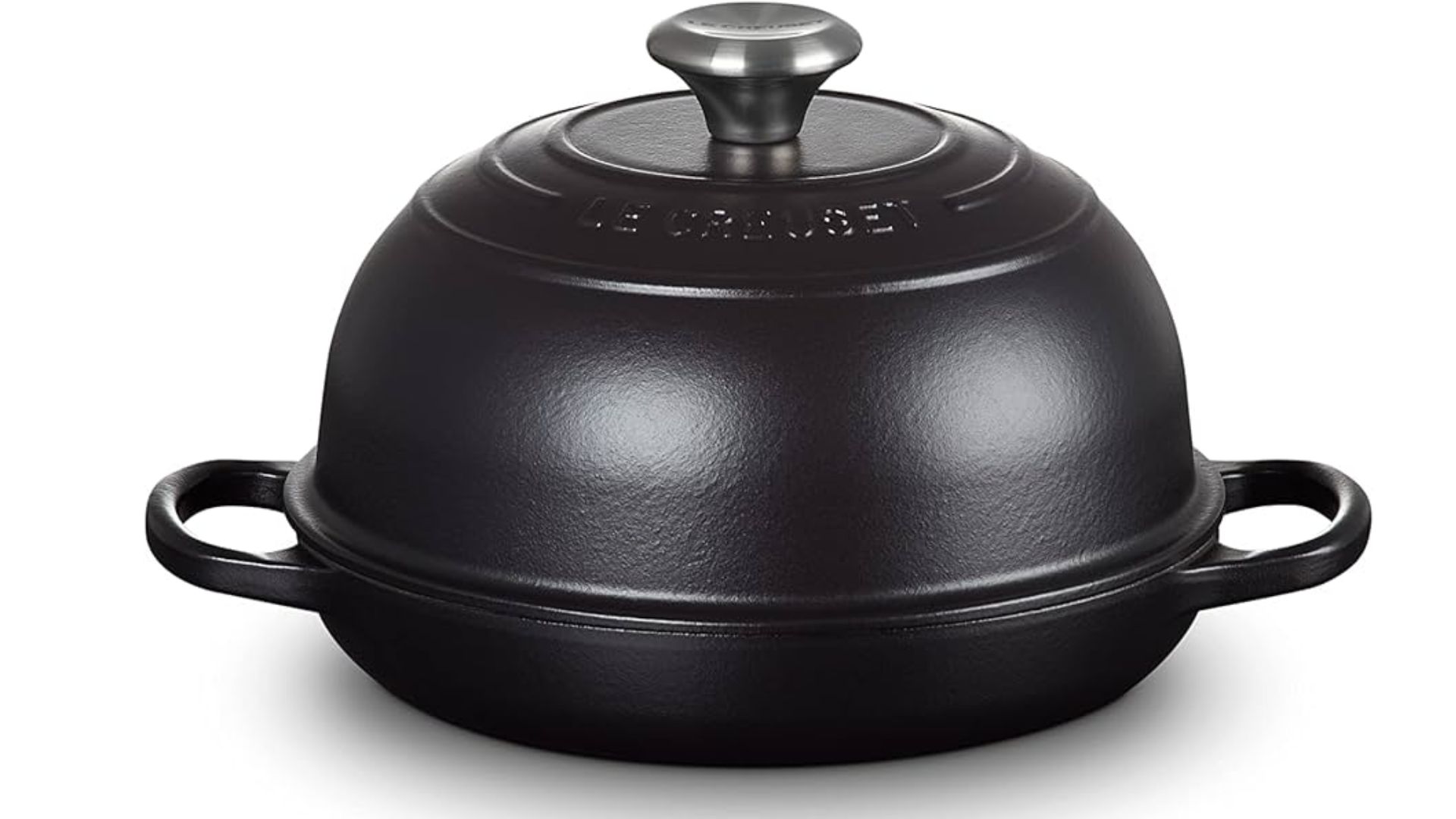
| Size | 24cm/1.6L |
| Material | Enamelled Cast Iron |
| Colours | Volcanic, satin black, sea salt, chambray, cerise |
| Oven safe? | Yes, up to 260°C |
| Guarantee | Lifetime |
Who would it suit?
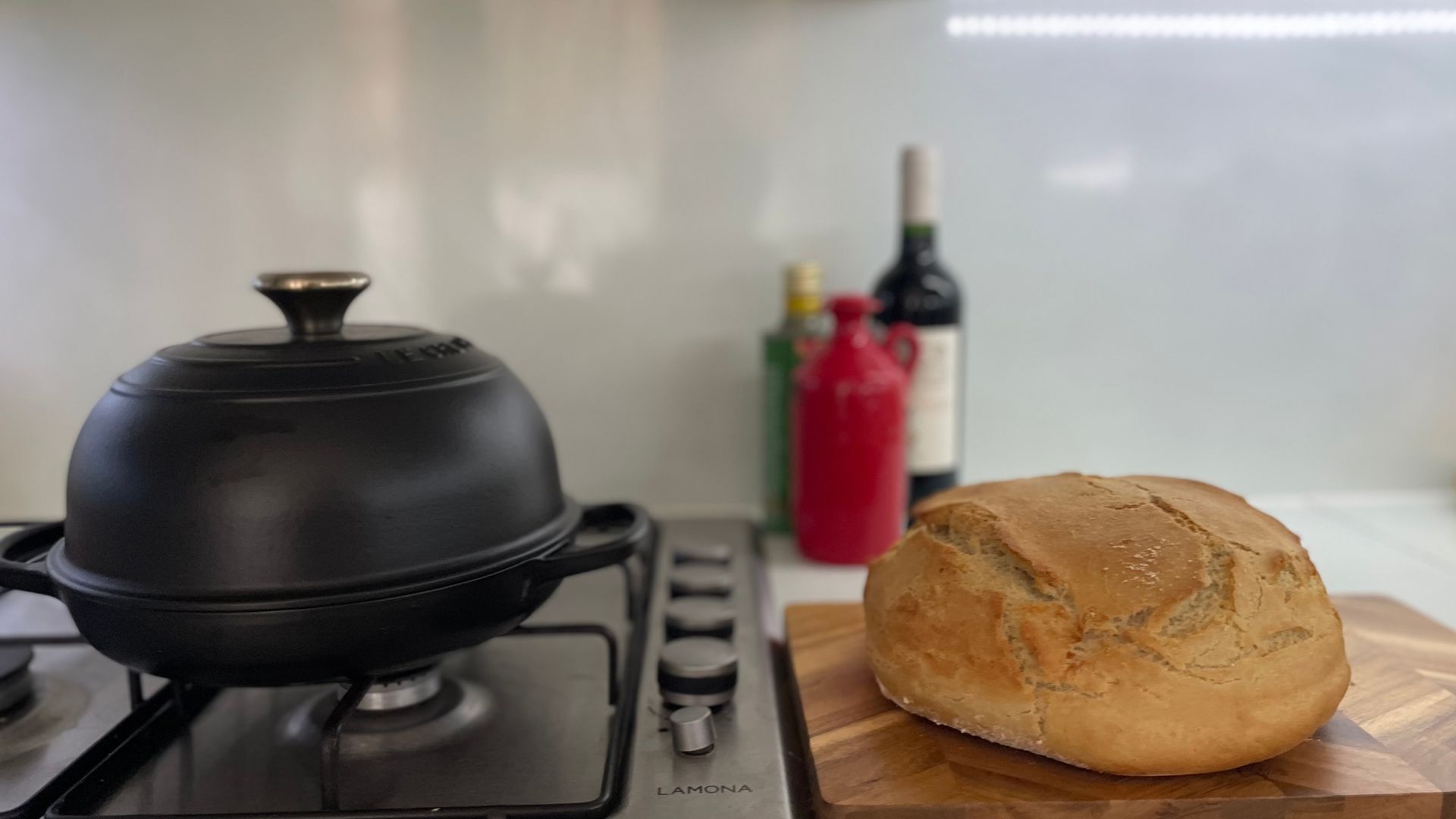
Lots of people ask "can I use a Dutch oven or casserole dish instead of a bread oven?" and the short answer is yes. However, if you're a regular bread baker, upgrading to a dedicated bread oven will make life easier in a lot of ways.
The key difference between a Le Creuset Bread Oven and a casserole dish is that this works upside down. The shallow, skillet-like base makes it easy to place and lift your bread out of the oven. The tall sides of a casserole dish can be hot and heavy, making it difficult to get the bread out. Also, when you take the lid off for a final 10 minute brown in the oven, you'll get a much more even colour and crisp over your bread when you use the oven, because it doesn't have deep sides.
So, that's a very detailed way of saying that this is a great investment for bread bakers. It locks in steam and gives an even transfer that helps keep bread springy and tall, with a lovely, open-crumb.
Of all the bread ovens and casserole dishes that I've baked my bread in, this gave the most even bake. The heat transfer is conistent and the weighty lid did a great job of locking in steam. I'd also put this down to the dimensions: the Le Creuset has a 9 inch diameter and 6 inch height. This is a little less wide, but taller than a casserole dish would be, but that works to your bread's advantage. It kept the steam close to my crust, preventing it from getting too thick, dry, and aggressive.
Sign up to our free daily email for the latest royal and entertainment news, interesting opinion, expert advice on styling and beauty trends, and no-nonsense guides to the health and wellness questions you want answered.
Of course, this is a little more dough than other bread ovens, but it comes with a lifetime warranty and in Le Creuset's signature range of colours, so you get what you pay for.
What is it like to use?
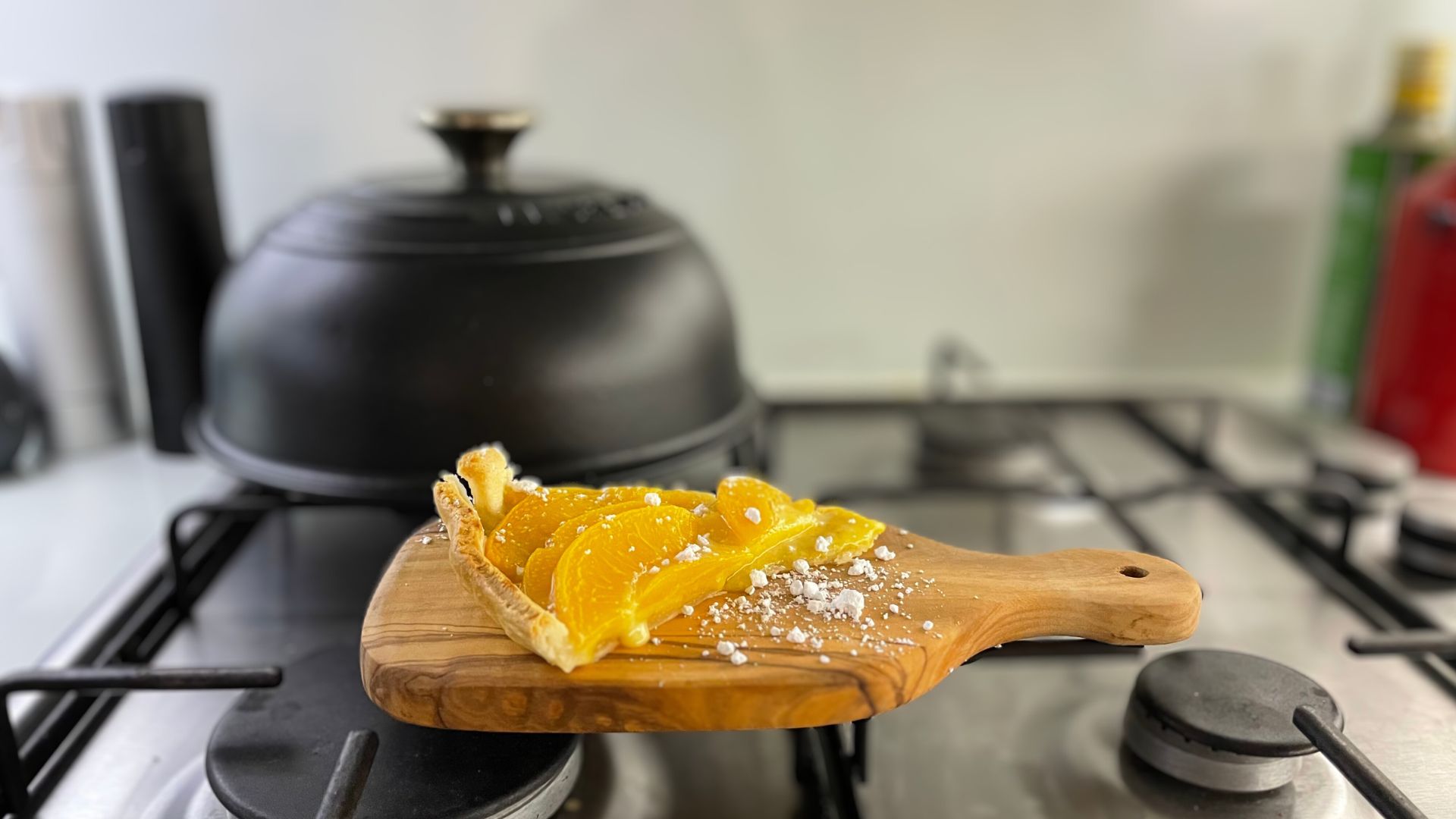
If you've cooked with cast iron cookware before, you'll know what to expect weight-wise. The Le Creuset Cast Iron Bread Oven is heavy and the lid is probably the most weighty part of it all. The knob is easy to hold, as are the two handles, but it was a bit of a squeeze getting it into my smaller oven. I had to remove a few trays to get some space around this. And, every time I had to either remove or replace the lid, the whole bread oven had to come out.
I tested it over a range of different recipes, because I wanted to see how versatile it was. Here's how it went:
Test 1: baking bread

Of course, the tests had to begin with bread, not just because this is called a 'bread oven'. I'm an avid baker and very enthusiastic bread consumer, so I have been working through brown bread, white bread, sourdough, brioche, rye bread - you get the idea. My house has turned into a semi-commercial bakery since testing this out.
Across the board, the Le Creuset delivered a crisp crackly crust with a beautiful, open crumb for all my loaves. The steam was well-trapped around the bread, locking in the moisture well, whilst giving it a beautiful, golden colour.
Obviously, each loaf required different timings, so I'll talk you through my classic white loaf technique. I placed the Le Creuset in the oven whilst it warmed up to 220°C. Then, I placed my white bread loaf inside the bread oven for twenty minutes. Then, for the last ten minutes of my bake, I turned the temperature down to 180°C, took the lid off and let it brown. I got a beautiful, even, golden colour across the whole dome.
The base browned and cooked well too. I'd seen one reviewer who thought that the base got a little too brown, but I didn't have that, even on my lighter, more delicate doughs. If you don't use a bread sling, you'll get some 2mm rings cooked into the base of your bread. It's like having a Le Creuset stamp, which I don't mind, but some people weren't very keen on having their bread become branding.
Test 2: cookies
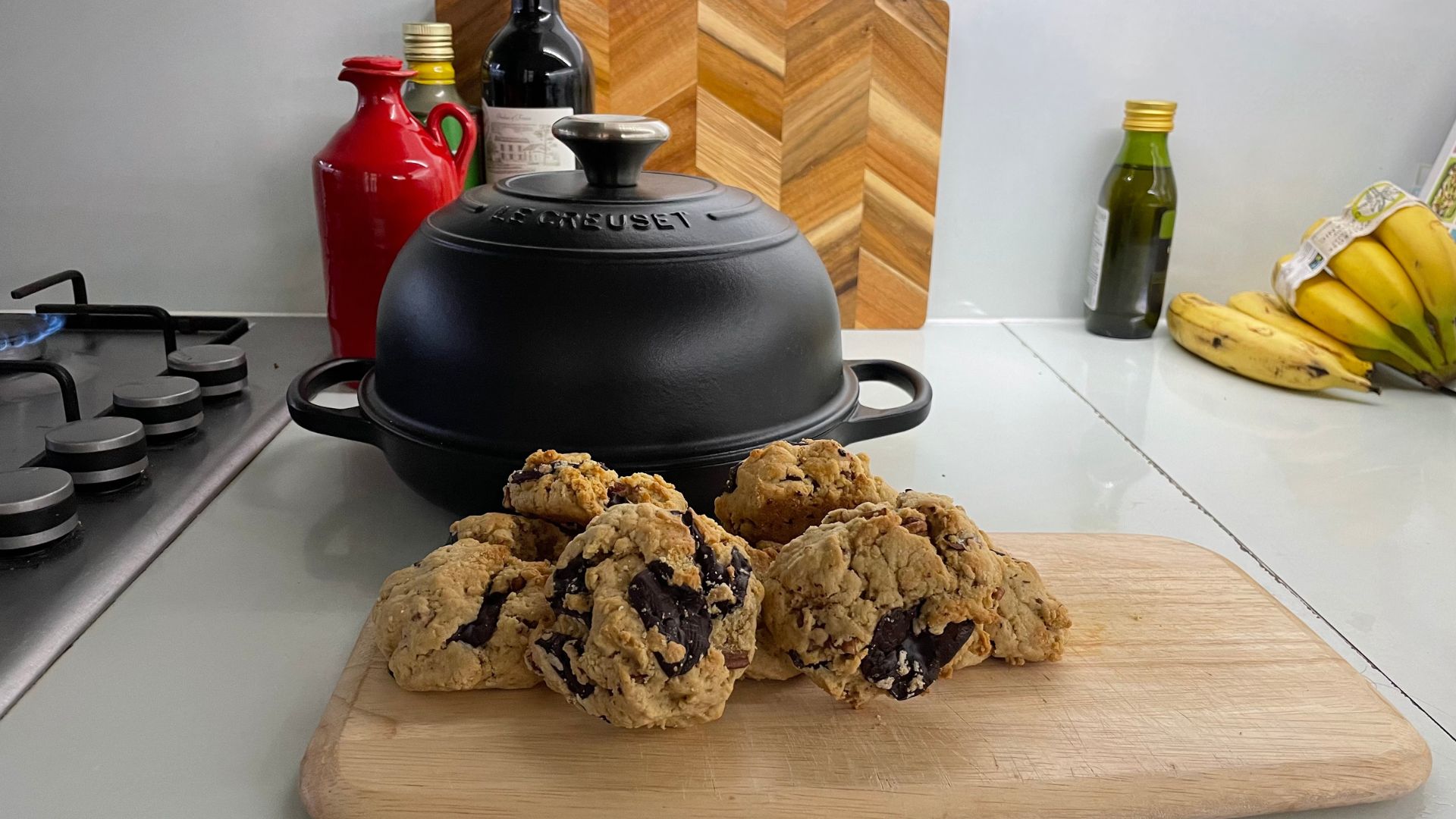
Here is where the diversity comes around. Contrary to popular opinion, that bottom skillet base can work some serious magic on your other bakes. I regularly make chocolate chip cookies, so I wanted to give my Le Creuset the chance to participate.
I made my standard chocolate chip cookie recipe, with butter, sugar, flour, chocolate chips, and eggs. Then, I lined the bottom of my Le Creuset with baking paper and popped the cookies in the oven. I pre-warmed the base of the Le Creuset for ten minutes and cooked these at 180°C for 12 minutes. As you can see, they held their chunky shape really well. They cooked right through and had a lovely soft, buttery centre. Granted, you could cook these on a tray, but the extra heat on the bottom got a really consistent texture across the whole cookie.
Test 3: fruit tart
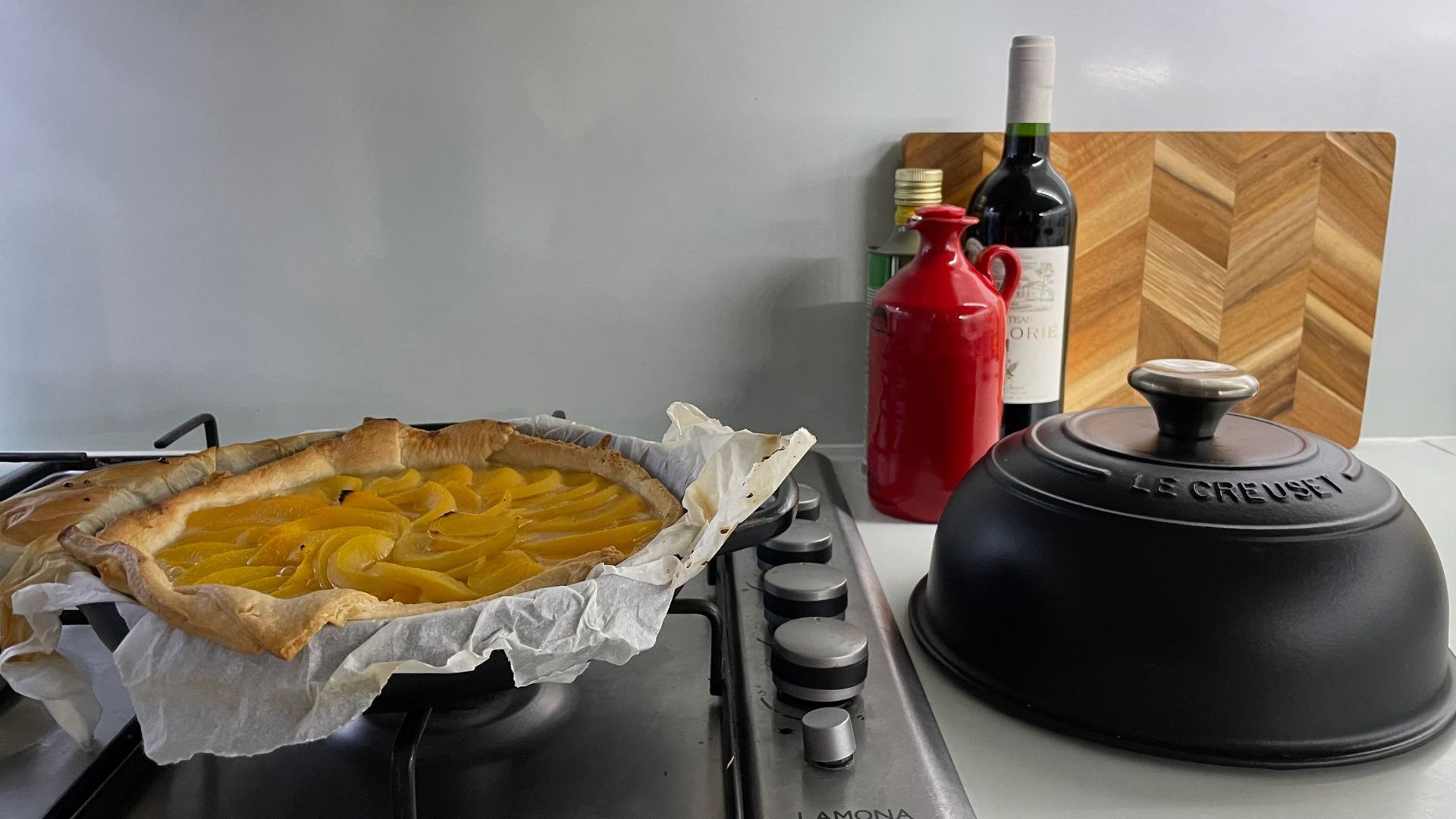
One of the first things that I thought when I saw the skillet-like base of the Le Creuset Bread Oven was that it would be perfect for a tart. I couldn't wait to get some shortcrust pastry out. I blind-baked mine for twenty minutes before adding some frangipane and peaches to the pastry. It was nothing short of perfection. The pastry was crisp and crumbly, perfectly cooked through, across all parts of the tart. And the fruits and frangipane crisped up and warmed right through, delivering nothing short of perfection. I'd be cooking a lot more tarts with this one, especially since you could use the lid to keep everything moist if you're worried about any toppings catching during cooking.
Test 4: deep dish cookies
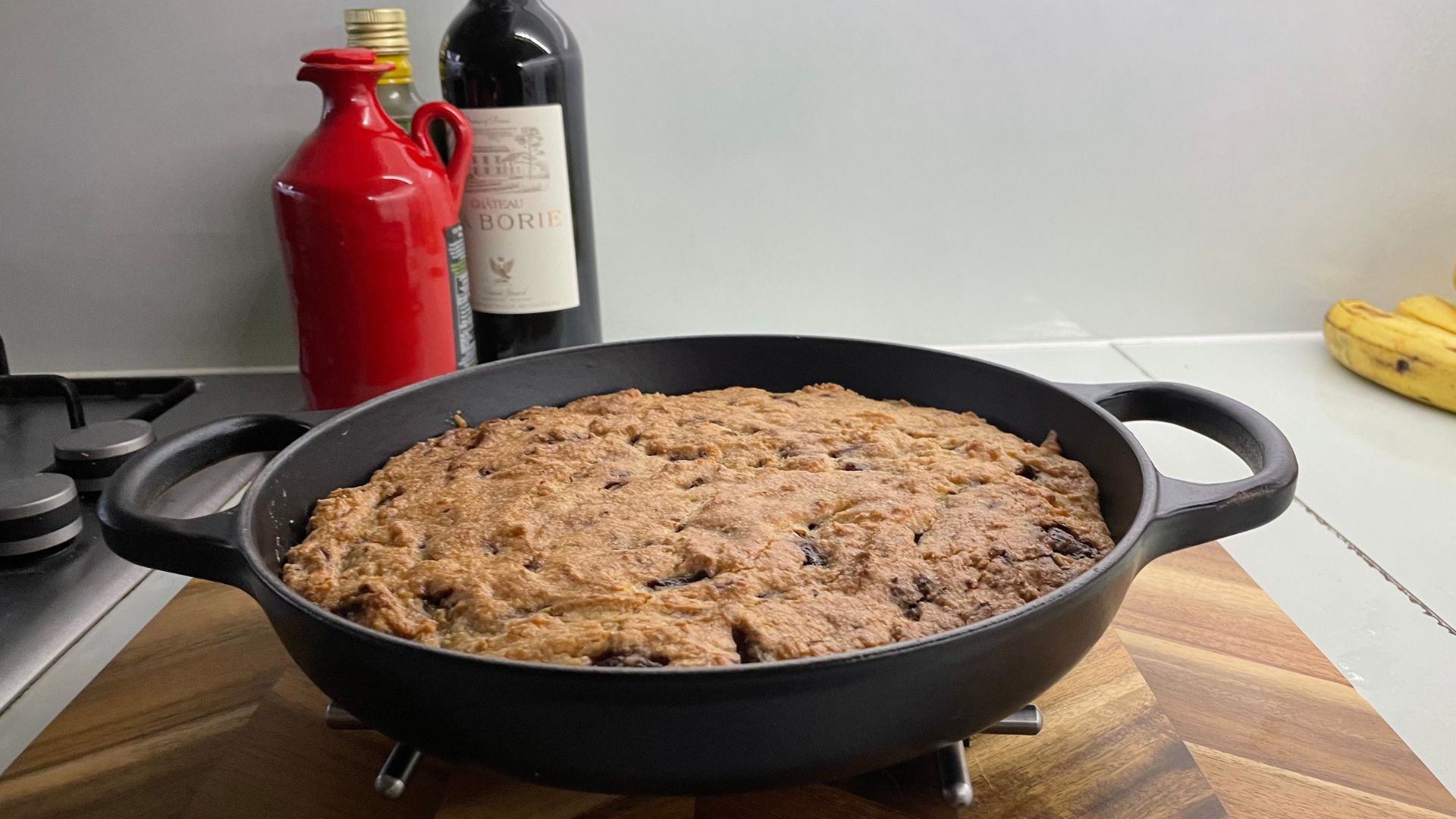
I know, I already made cookies, but what about a deep dish batter that could fill the whole base? Well, here you go. I made up my cookie dough and pressed it across the base of the pan. This cooked in ten minutes and, whilst the top looks brown, the inside of my cookie was light and crumbly. It made a delicious pudding centrepiece that everyone could scoop from, but I had one small hitch. Whilst the enamel doesn't scratch when you spoon out the cookies, it didn't really act as a non-stick, so everyone had to attack the cookie whilst it was still baked into the base of the Le Creuset.
When it came to cleaning, some of the cookie had baked itself around the ridges on the base of the bread oven. With a sponge, water, and a lot of patience, I managed to remove every crumb from the base. You might need a small, soft brush to reach every part, I would definitely keep one to hand if I wanted to keep using this like a skillet.
Everything else I made
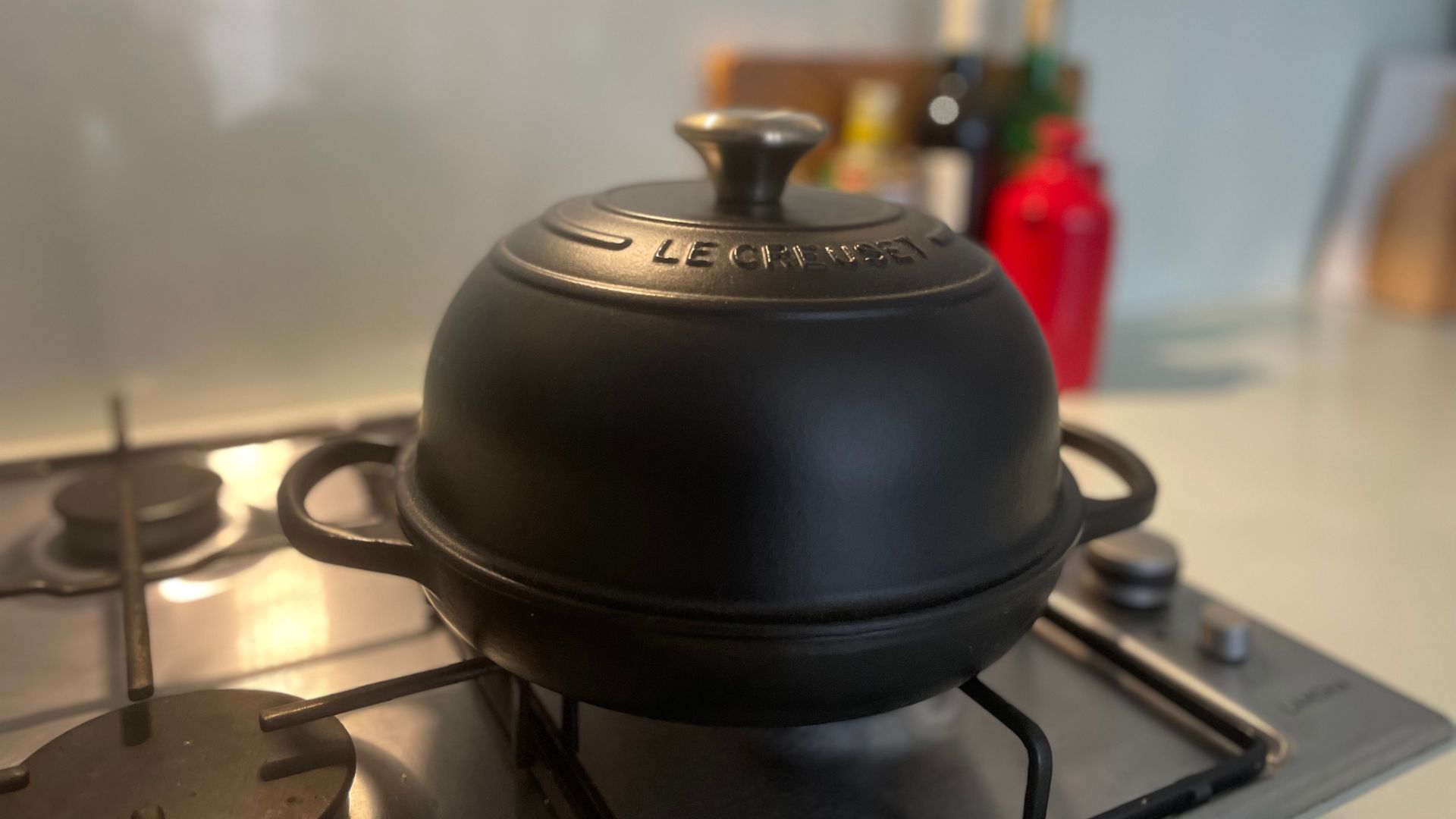
I've since been experimenting with using this to roast vegetables, but I've also made pizza, flan, and lots of other bakes too. The pizza was my greatest success: this acted like an oven stone, cooking my base evenly and quickly. In twenty minutes, it was well-cooked, evenly topped, with lovely brown bubbles over the cheese. It's not quite a wood-fired pizza, but it's the best that you'll get from an oven pizza.
Cleaning
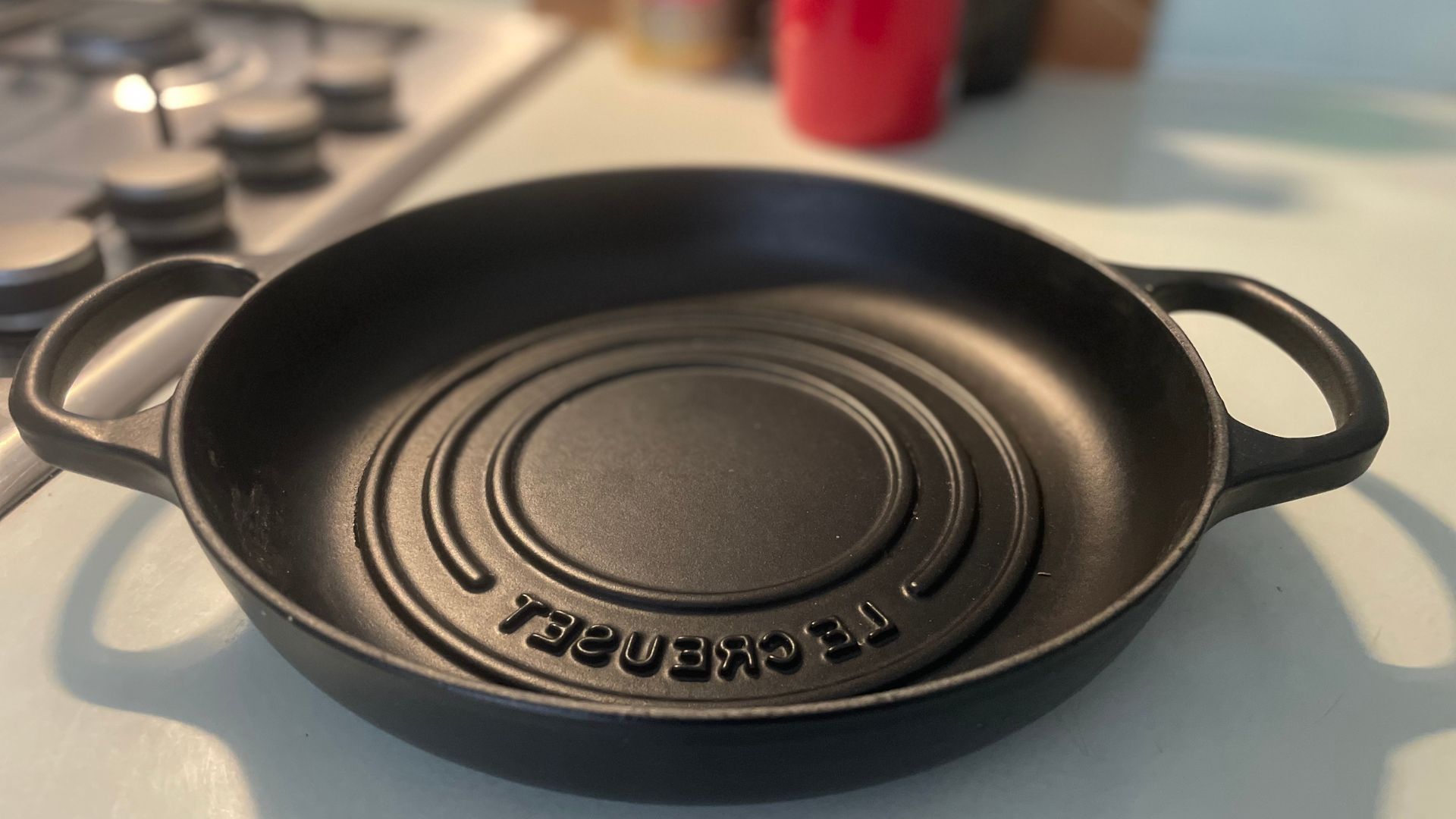
Unusually for a Le Creuset, the bread oven is dishwasher safe. So, once you're done with your bakes, you can throw the lid and base away and it'll be sparkly clean. However, if you want yours to last for the full lifetime that this is guaranteed for, I'd recommend washing this by hand.
Use warm, soapy water and a squeeze of a gentle washing-up liquid (I go for Ecover or Method) and this should wipe clean relatively easily. As I found with the deep dish cookies, some bits will stick around the raised rings, but if you make sure to give this some time and attention, you'll get them clean in no time.
How does it compare?
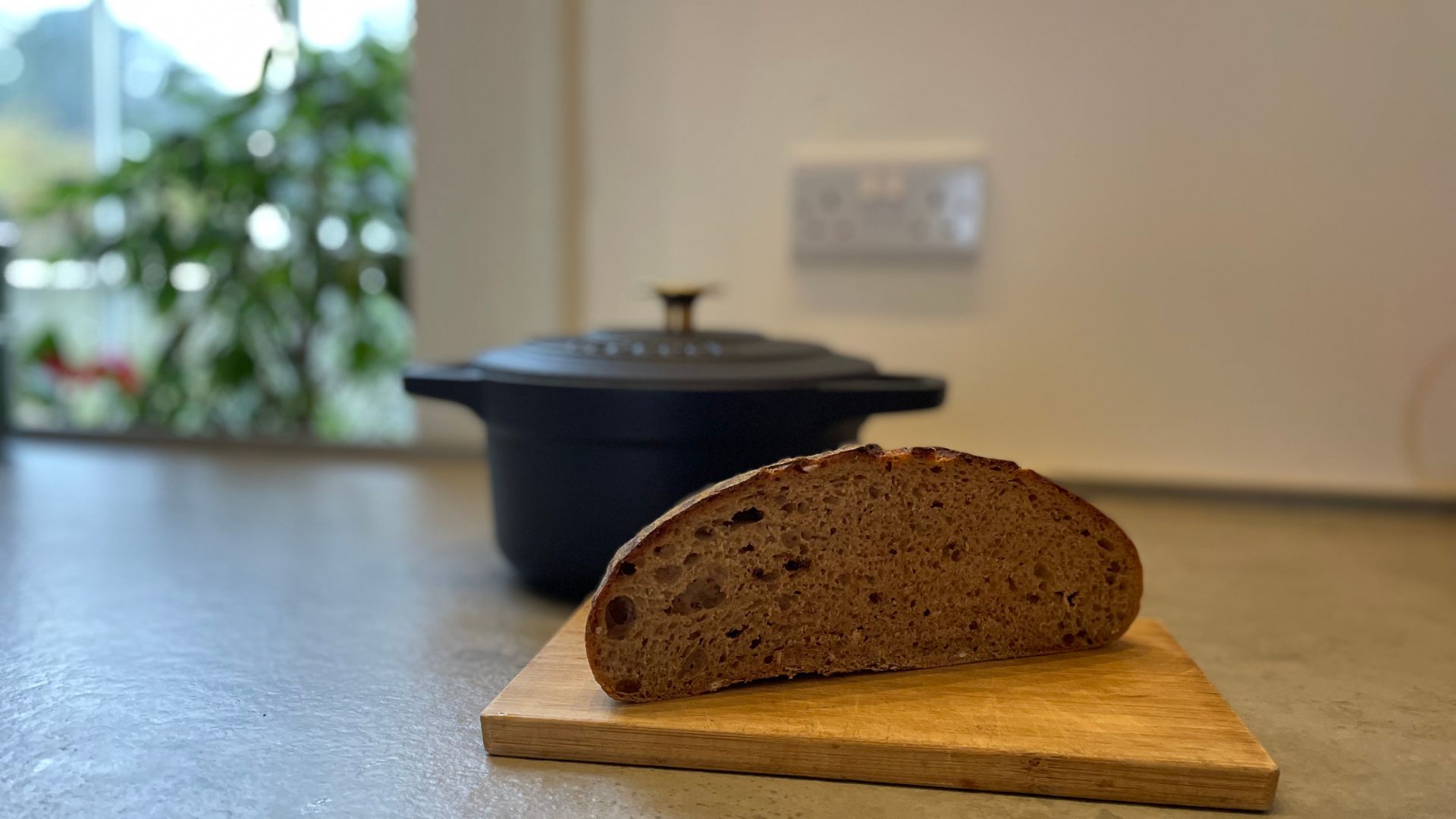
Bread ovens, also called bread cloches, are relatively rare. You won't find them in the middle aisle of Aldi, nor will you spot them amongst collections from John Lewis and Dunelm.
I've gone into the differences between the Le Creuset Bread Oven and Casserole Dish further up the article: they'll both cook bread well, but you'll get a more evenly browned loaf about ten minutes quicker in the bread oven. It's also nicer to lift out of the base, because of the tall sides on a casserole dish.
If you want to invest in a cheaper bread oven, lots of people will point you in the direction of the Koch & Kochin Cast Iron Bread Pot. It retails at £79.99, which is a lot cheaper than the Le Creuset. It doesn't come with a lifetime warranty (like the Le Creuset), and, given the price, I'd imagine that it won't last as long as your Le Creuset.
Some people like the lighter enamelled lining, which is great as a non-stick, but you're more likely to mark it in comparison to Le Creuset's black lining. I've also seen some people suggest that this isn't quite as good at locking in moisture around your bread and that the handles are a little smaller and harder to pick up. They're very subtle compromises to make and plenty of people will take the £150 saving, but if you know you'll use this as much as me, this is worth investing in.
Should you buy it?
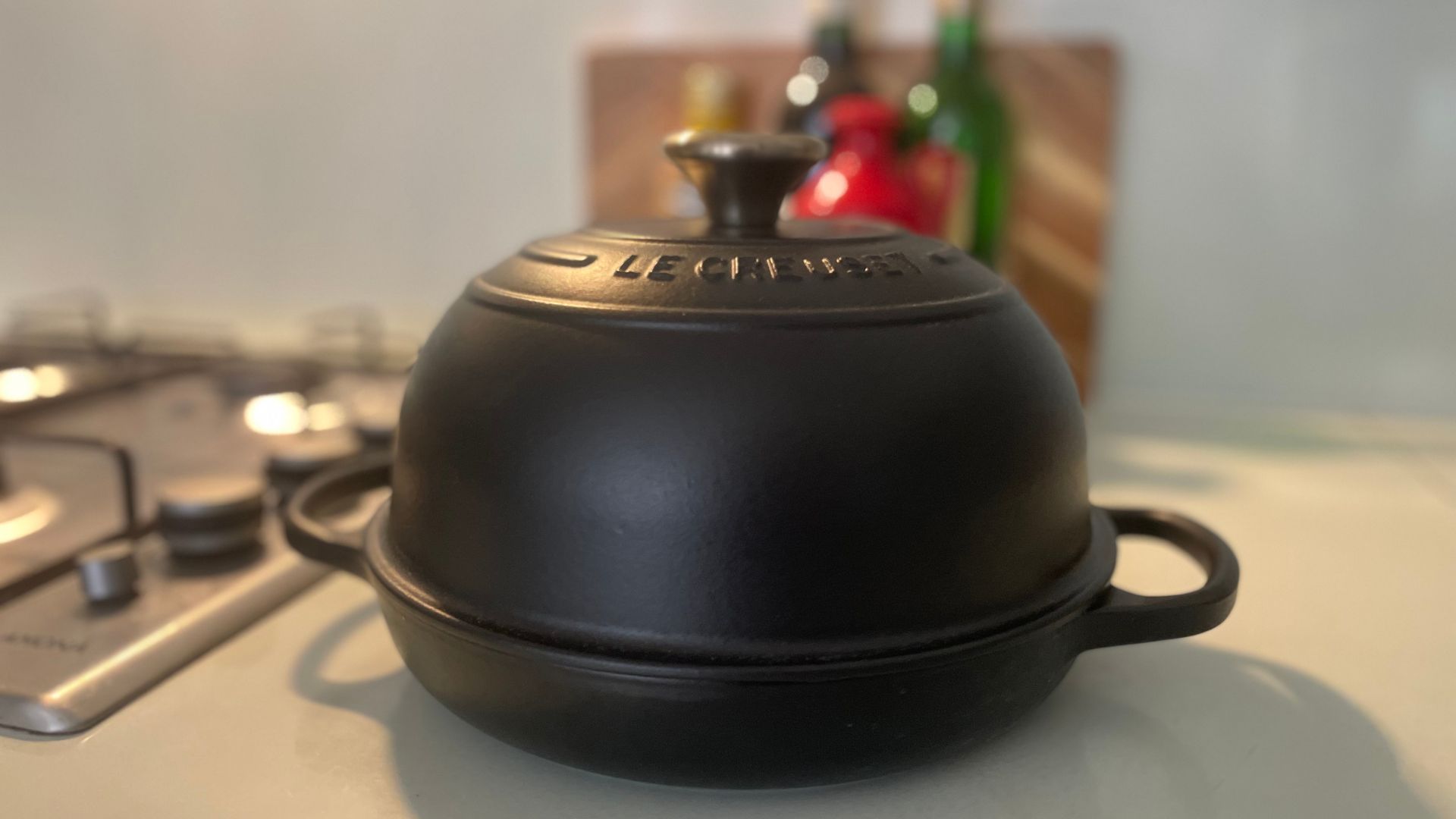
So, is the Le Creuset Bread Oven worth it? If you're a budding baker, I'd be tempted to say yes. This comes in all the chic Le Creuset colours and you'll get to enjoy the subtle benefits of wide handles, a comfortable lid, and premium design. There are cheaper versions out there, but none will promise the quality and warranty that Le Creuset can.

Laura is woman&home's eCommerce editor, in charge of testing, reviewing and creating buying guides for the Homes section, so you'll usually see her testing everything from the best dehumidifiers to sizing up the latest Le Cruset pot. Previously, she was eCommerce editor at Homes & Gardens magazine, where she specialised in covering coffee and product content, looking for pieces tailored for timelessness. The secret to her heart is both simplicity and quality. She is also a qualified Master Perfumer and holds an English degree from Oxford University. Her first editorial job was as Fashion writer for The White Company.